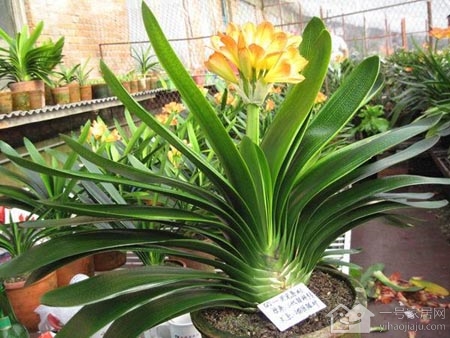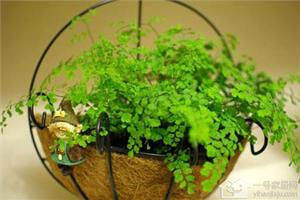How does raising Phalaenopsis affect the price of Phalaenopsis?
Clivia is a high-grade expensive flowers, elegant plants handsome, there are gentleman grace, flowers such as orchid, so named. Clivia flower language is noble, there is a gentleman's wind. Therefore, clivia is loved by many people. Native to tropical areas of southern Africa, growing under trees, so it is afraid of hot and cold, like semi-cloudy and humid environment, fear of strong direct sunlight. So how do you make the flowers bloom every year?

I. Introduction to Clivia
Clivia is a family of Amaryllidaceae. Clivia is a perennial herb, flowering up to 30~50 days, mainly in winter and spring, New Year's Day to Spring Festival around the opening. Avoid strong light, semi-negative plants, like cool, avoid high temperature. The optimum temperature for growth is 15~25℃, and growth stops below 5℃. Like hypertrophy, good drainage of soil and wet, bogey dry environment. Clivia has high ornamental value. Its plant elegant Clivia handsome, a gentleman grace, flowers such as orchid, and named. Root fleshy fiber shape, leaf base forms false bulb, leaf shape sword, grow to 45 centimeters, alternate arrange, whole margin. Umbels terminal, each inflorescence has 7~30 florets, more than 40. Flowers stipitate, umbrella-shaped at flower tips, funnel-shaped, erect, yellow or orange. It can bloom all year round, mainly in spring and summer. The fruit ripens around October. Flowers and leaves are beautiful. Beautiful and generous, but also resistant to shade, suitable potted indoor decoration, for viewing leaves and flowers, but also the layout of the venue, decoration hotel environment ideal potted flowers.
Clivia plants quite dial handsome, there is a gentleman's grace, and flowering up to 30~50 days, especially suitable for Chinese-style home, clivia flowering mainly in winter and spring, New Year's Day to Spring Festival around the opening, very festive. Even when not in bloom, green outstretched leaves have a nice decorative effect. Clivia likes loose, fertile, well-drained slightly acidic soil. Pot soil should be 80% forest decaying leaf soil mixed with about 20% grain sand mixed culture soil. Or with a variety of clivia culture soil sold on the market, this kind of medium quality fertile, loose permeability, good permeability, conducive to root cultivation.
2. How to make Clivia bloom every year
Some Clivia flowers after a year no longer flowering, leading to this phenomenon for many reasons, the most important of which is lack of nutrition. Because after flowering Clivia, has consumed a lot of nutrients, the original pot soil nutrients have been left, if no fertilizer and add new culture soil, let it continue to grow leaves, flowering will be very difficult. Even if flowering, flowers are often thin, color fade, ornamental value is not high. In order to make it bloom every year, the plants that have bloomed should be changed pots and soil in the beginning of spring and after the flowers fade, and water and fertilizer management should be strengthened to make them grow healthily before they can bloom again.
Clivia has developed fleshy roots, can store more water, watering too much easy to rot roots; watering too little. It will also affect the growth of new leaves, roots and arrows. The amount of watering should be treated differently according to the specific situation: all small pots and flowers, high temperature, good ventilation, fast evaporation, good soil ventilation should be watered more, and vice versa. Generally, seedlings need less water, flowering period needs more water, spring and summer watering should be more, generally watering once a day. Water can be poured once every 1 - 2 days in autumn. Winter temperature is low, watering should be less, generally every 5 to 7 days to irrigate 1 time. To Clivia watering can not wait for the pot soil completely dry after watering.
III. Key Points of Clivia Conservation
Clivia hi neutral water, clean, pollution-free tap water, well water, river water, etc. can be used for irrigation, but because the temperature of fresh tap water and well water is lower than the earth temperature, and contains some impurities, it should be placed for 1~2 days before use. As for watering, there is also a lot of attention.
The best way for clivia seedlings is to spray them with a watering can. Spray the nozzle upward to the leaves. The advantage of doing so is that in addition to watering the flowers, it can also wash the dust. At the same time, there are mist beads on the leaves to ensure that the leaves have a certain humidity. The evaporation of water in the sun can reduce the surface temperature of the leaves and prevent sunburn. However, the flowering Clivia can not be watered by sprinkler irrigation, to prevent water from entering the leaf sheath to cause rotten heart, for the flowering Clivia can only be irrigated into the pot.
The general watering principle is "see wet see dry, not dry do not irrigate, dry thoroughly irrigate". Dipping is to make all roots of Clivia in the same humidity. Whether the water is poured thoroughly cannot be judged only by whether there is water flowing out of the bottom of the basin. Because sometimes basin soil dry hardening, shrink into a ball, watering, water quickly from the basin wall to the bottom of the basin, and from the bottom hole out. The central part of the pot soil did not even touch a little water. If watering was stopped at this time, the leaves of Clivia would wither and arrows would form when they were shooting arrows.
A simple and effective watering method is to immerse the flowerpot in a basin or bucket full of water and take it out after soaking for half a minute. However, the disadvantage of doing so is that nutrients in the soil are relatively easy to lose, so if you want to make Clivia roots deep and leaves big, you should also pay attention to timely supplement nutrients to it. Clivia needs nutrients mainly from organic fertilizer, such as bean cake, peanut cake, animal viscera and so on. Under normal circumstances, it can be applied in spring and autumn within one year. In spring, it is applied once at the end of April and early May after flowering; in autumn, it is applied again from mid-September to late October after fruit harvest.
Finally, the knowledge about the maintenance of clivia is over. In addition, clivia can absorb carbon dioxide and release oxygen and has the function of absorbing dust. Clivia flowers are mostly gorgeous red or orange, especially suitable for decorating homes during winter flowering, adding a lively and festive atmosphere.
The above is the relevant introduction of this article, I believe you have read this also have a simple understanding, if necessary, you can continue to pay attention to No. 1 home network, to learn more information.
Related
- Wuhan Hospital Iron Tree Blooming Result Was Instantly Frightened by the Gardener Master
- Which variety of camellia is the most fragrant and best? Which one do you like best?
- What is the small blue coat, the breeding methods and matters needing attention of the succulent plant
- Dormancy time and maintenance management of succulent plants during dormancy
- Minas succulent how to raise, Minas succulent plant pictures
- What are the varieties of winter succulent plants
- How to raise succulent plants in twelve rolls? let's take a look at some experience of breeding twelve rolls.
- Attention should be paid to water control for succulent plants during dormant period (winter and summer)
- Watering experience of twelve rolls of succulent plants
- Techniques for fertilizing succulent plants. An article will let you know how to fertilize succulent plants.



